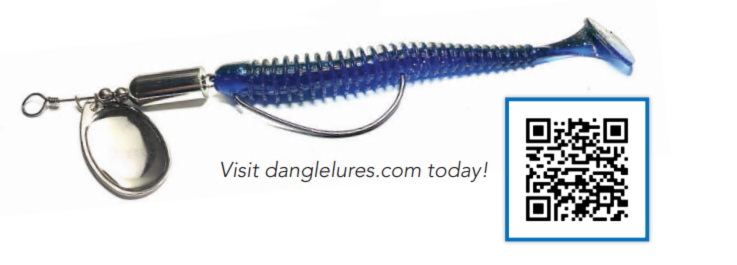Welcome to this month's mini-quiz, brought to you by the folks at Dangle Lures. Last month our challenge was a crossword puzzle, and the winner of the Dangle Lures prize-pack was Anthony Gruber of Newport News, VA. For this month's quiz we promised to post the answers after drawing a winner and you'll find them at the very bottom of this page. But we'll put the questions up first, for folks who didn't see the quiz in print.

1. Inline spinners work great not only because of their flash and visual appeal, but also because of the vibrations they put out. Fish can sense these vibrations thanks to their lateral line, a series of cells running down the side of their body. These cells contain small structures that are stimulated by water movement and/or pressure changes. Interestingly, these same small structures are also present in the human ear, and are called ______.
A. Cupula
B. Charcuterie
C. Cilia
D. Tympanic membranes
2. There are many types of effective bladed baits, but some inline spinners have an advantage over other blades which comes into play in certain scenarios. This is:
A. More weight in a compact package, allowing for better casting.
B. The ability to remain upright and work properly in very strong currents.
C. They flutter while sinking, often drawing strikes before the retrieve.
D. All of the above.
3. The best material to use for the shaft of an inline spinner is ________.
A. Brass, because you can bend it back into shape after a tough snag or vicious strike.
B. Aluminum, because it creates the least friction and allows the spinner to spin the easiest.
C. Nickle, for its strength, durability, corrosion resistance, and increased weight.
D. Stainless-steel, for its strength, durability, and corrosion resistance.
Answers: C, D, D